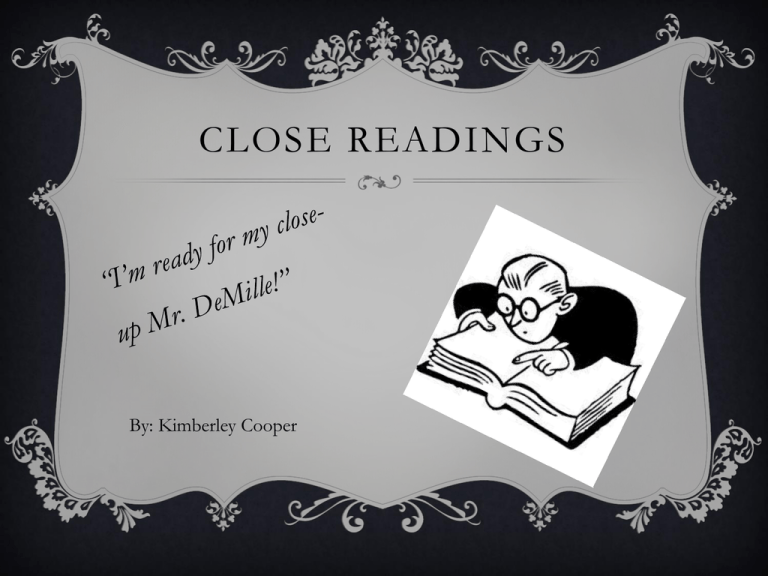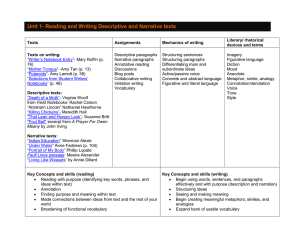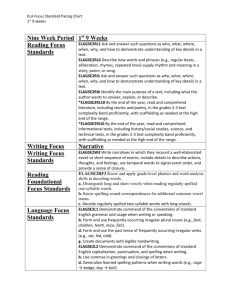Close Reading: Definition, Standards, and Techniques
advertisement

CLOSE READINGS By: Kimberley Cooper OBJECTIVE After the presentation students will be able to define close reading and demonstrate a close reading of a complex text with 90% proficiency. After the presentation students will be able to translate what they think about texts, and the author’s purpose, the structure, and the flow of texts by creating a well-written essay analyzing the selection. STANDARDS Read closely to determine what the text says explicitly and to make logical inferences from it; cite specific textual evidence when writing or speaking to support conclusions drawn from the text. Determine central ideas or themes of a text and analyze their development; summarize the key supporting details and ideas. Analyze how and why individuals, events, and ideas develop and interact over the course of a text. STANDARDS Interpret words and phrases as they are used in a text, including determining technical, connotative, and figurative meanings, and analyze how specific word choices shape meaning or tone. Analyze the structure of texts, including how specific sentences, paragraphs, and larger portions of the text (e.g., a section, chapter, scene, or stanza) relate to each other and the whole. Assess how point of view or purpose shapes the content and style of a text. STANDARDS Integrate and evaluate content presented in diverse formats and media, including visually and quantitatively, as well as in words.* Delineate and evaluate the argument and specific claims in a text, including the validity of the reasoning as well as the relevance and sufficiency of the evidence. Analyze how two or more texts address similar themes or topics in order to build knowledge or to compare the approaches the authors take. Read and comprehend complex literary and informational texts independently and proficiently. CLOSE READING A close reading is a careful and What is a close reading? Let’s examine what Dr. Douglas Fisher (Professor of Language and Literacy Education in the Department of Teacher Education at San Diego State University) purposeful reading of a text. Actually, it’s a careful and purposeful rereading of a text. It’s an encounter with the text where students really focus on what the author had to say, what the author’s purpose was, what the words mean, and what the structure of the text tells readers. http://www.youtube.com/watch?featu re=player_embedded&v=5w9v6-zUg3Y#! CLOSE READING How to do a close reading? http://www.youtube.com/watch?v=a dXdTXEzmzE Consider these four elements • • • • Language Narrative Syntax Context CLOSE READING Language (diction used to fit the audience, style and purpose of the text) What did the author repeat? What was emphasized? What kind of language is used? • Formal/informal • Slang • Figurative language/mood words What words are important to understanding the theme/thesis? CLOSE READING Narrative (story) Who is telling the story? From what perspective (point of view) is the story told? How is the story told? What motivates the narrator to tell the story in this manner? CLOSE READING Does the author use Standard Syntax (the order author’s American English? arrange their words to provide Why would the author use meaning/get a point across) nonstandard syntax? (grammar/sentence structure) Who is the audience? How does this writing style affect the audience? CLOSE READING Context (happenings surrounding What is the setting of the story? What is the background of the authorship) author? In what environment was the story written? (what was happening at the time the story was written?)











